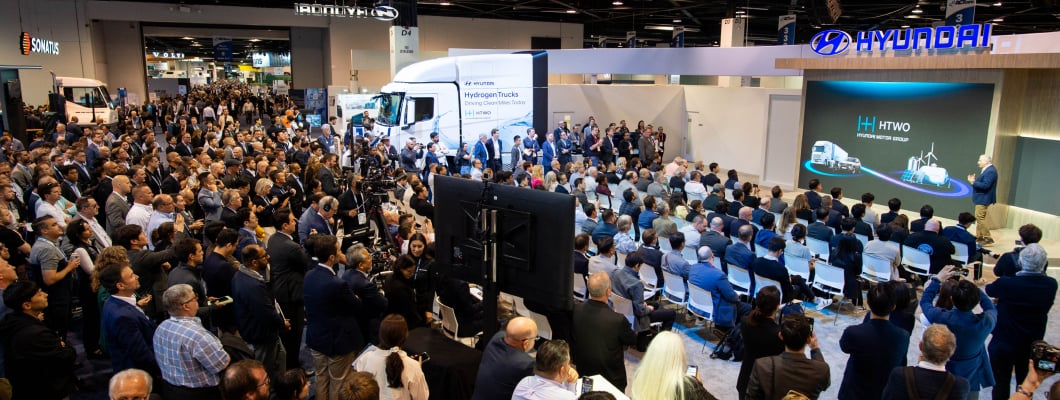ACT Expo 2025 opened with a powerful keynote address that captured both the complexity and the promise of the clean transportation transition. Kicking off this year’s event, Cummins Chair and CEO Jennifer Rumsey emphasized that the energy transformation has entered an even more dynamic and unpredictable phase than anticipated, challenging the industry to remain resilient, agile, and focused on long-term goals.
“In just one year, we’ve seen a shift from regulatory clarity and investment momentum toward a period of heightened uncertainty,” she noted. “Regulations that once clearly drove us toward a net-zero future are now under reconsideration, incentives are in flux, and trade policies are impacting global supply chains.”
Yet, rather than stepping back, the keynote championed continued innovation and investment in cleaner, more efficient technologies across a broad range of solutions — including battery electric, fuel cell, hybrid, natural gas, hydrogen, and advanced diesel engines.
Highlighting the progress already made, the keynote traced the industry’s remarkable evolution over the last 25 years. Emissions from diesel engines in the U.S. have dropped by more than 98%, with major strides in fuel efficiency and operational cost savings.
For Cummins alone, on-highway heavy-duty engines have improved fuel economy by nearly 25% since 2010, and the company has already met its goal of reducing 55 million metric tons of greenhouse gas emissions from products in the field — years ahead of schedule. That equates to 5.4 billion gallons of diesel saved and nearly $20 billion in customer savings.
Despite a challenging regulatory and economic environment, the keynote called on the industry to double down on its commitments.
“This is a time for us to come together — to move the industry forward and ensure that clean air, water, and a sustainable future remain within reach for future generations,” said Rumsey, outlining three essential actions to guide the industry through this critical period:
- Smart, Achievable Regulations: “Regulatory certainty is vital. Goals must be ambitious yet realistic, giving all technologies the opportunity to compete on performance and emissions impact. Excluding proven low-carbon solutions, she warned, could hinder progress.”
- Life Cycle Emissions Thinking: “It’s not just about tailpipe emissions. From production and transportation to distribution, the entire fuel and power source lifecycle must be considered when creating policies and evaluating sustainability.”
- Continued Innovation: “Efficiency improvements remain the fastest path to near-term greenhouse gas reductions. Whether through diesel, hybrid, or battery electric, technological innovation must continue — delivering both environmental gains and economic value.”
Technology in Action
Real-world examples punctuated the address. Fleets like WM, UPS, and Gazelle Transportation have shown strong results from adopting natural gas vehicles. Gazelle now powers more than half its fleet with natural gas, consuming over 500,000 gallons annually while gaining stability in fuel costs — its second-highest expense category.
Cummins’ upcoming X15 engine will offer a 4% fuel economy improvement over 2024 models, with enhanced powertrain integration and data connectivity to optimize fleet management. Hybrid technologies, gaining traction in transit and commercial sectors, were also highlighted as a vital bridge to full electrification.
Electric vehicle adoption is accelerating in specific applications, with Blue Bird delivering more than 2,500 electric school buses — suitable for more than 90% of U.S. routes. However, the keynote emphasized the need to further reduce total cost of ownership to enable broader market adoption.
To help lead that charge, Accelera by Cummins is partnering with PACCAR, Daimler Truck North America, and EVE Energy, through a joint venture known as Amplify Cell Technologies, to manufacture lithium iron phosphate battery cells in the U.S., strengthening domestic electrification infrastructure.
“This moment demands that we move forward — together,” Rumsey concluded. “We must advocate for inclusive, innovation-driven policies, advance sustainable technologies with real-world impact, and provide customers with solutions that align performance with purpose.”
While the road ahead is complex, ACT Expo 2025 began with a clear message: a more prosperous, sustainable future for transportation is possible — but only through collaboration, flexibility, and an unwavering commitment to progress.
This article was originally published on ACT News and can be read here.


